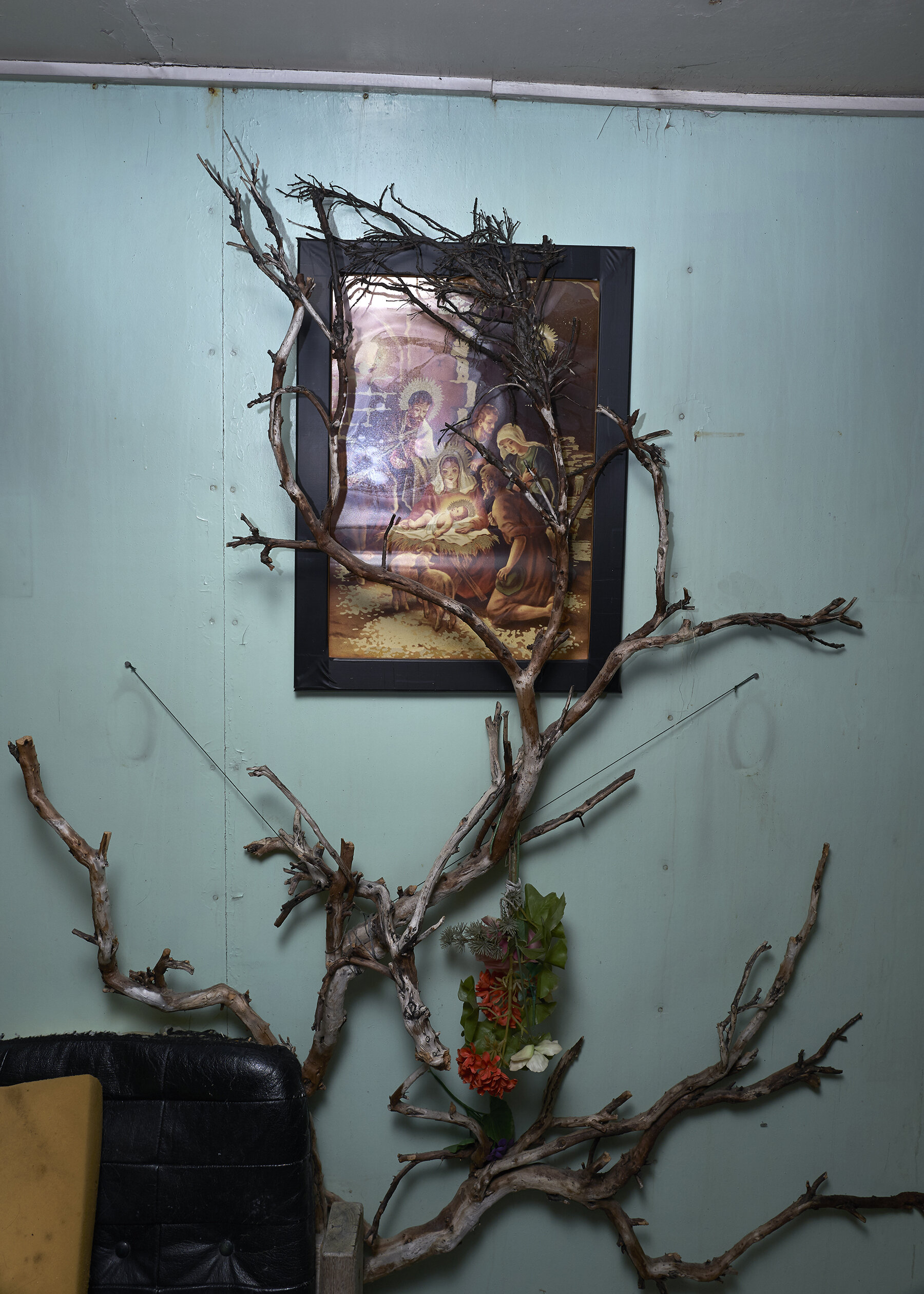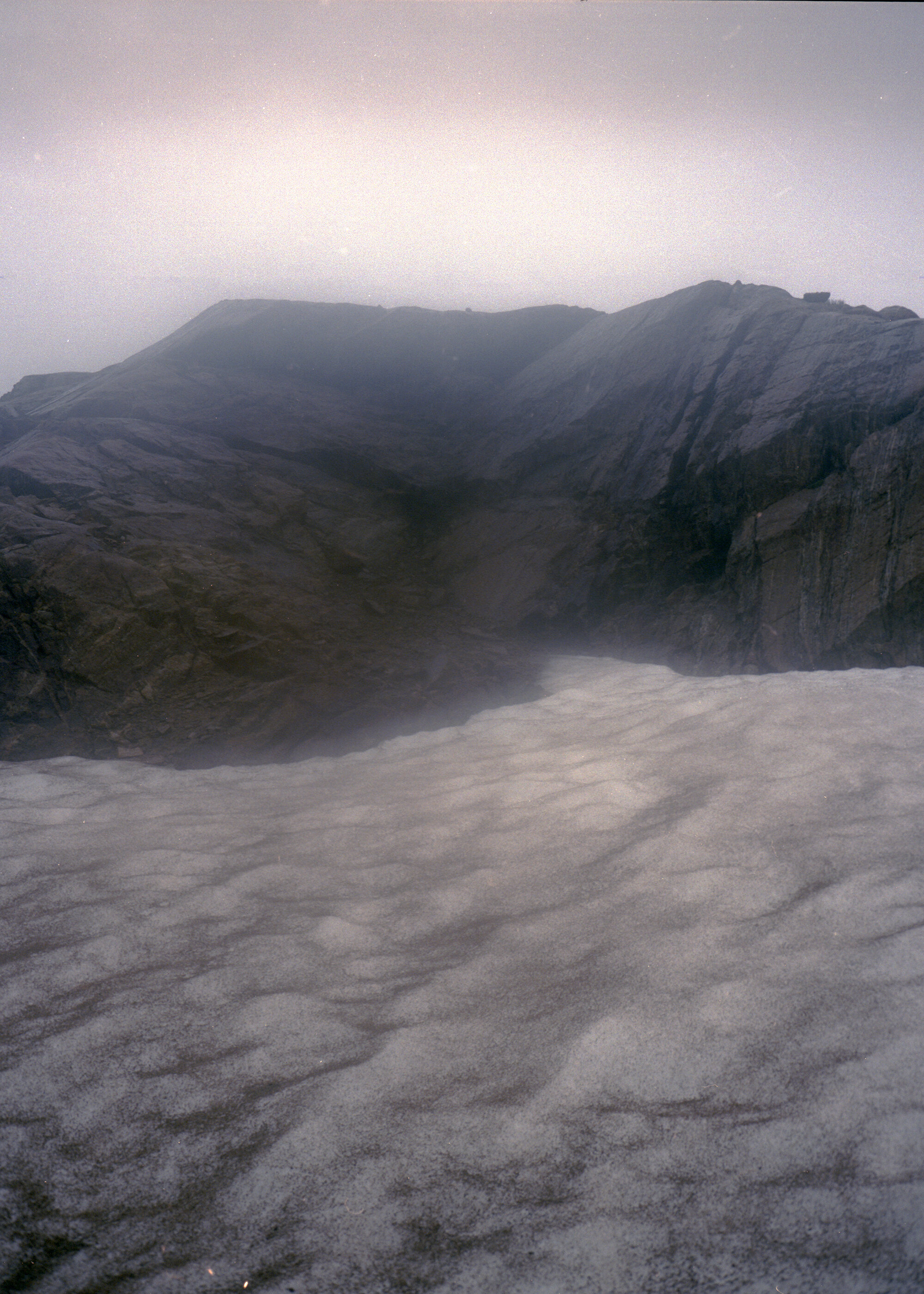Interview - Nikolai Frerichs
INUIT HAVE NO WORD FOR FUTURE - INTERVIEW WITH NIKOLAI FRERICHS
Nikolai Frerichs is a photographer based in Hamburg, Germany. In his series ‘Inuit Have no Word for Future’ that he photographed in east Greenland's capital Tasiilaq, Frerichs communicates the disappearance of the cultural identity of the Inuit due to climate change, tourism and the promises of the western lifestyle. Some of the artist's pictures are reportage-like and some are staged in the studio.
In an interview with GUP, Frerichs discloses the details of his photographic journey to Greenland and his photographs.
The Arctic weather conditions in Greenland are quite hostile for visitors, usually, the area’s temperature is below zero. When you travelled to Tasiilaq, how was it for you to photograph there?
I travelled to Tasiilaq in spring 2018, so the temperatures were already quite pleasant.
I also spent a week in the wilderness. To charge the camera, I used a solar panel and a power bank. I also had an analogue medium format camera with me. I found it more photographically interesting in Tasliiaq, here I was able to find some intriguing motifs just on the outskirts of the city, such as bones and skulls that I built into sculptures. Greenland's nature is quite rough and inhospitable, there are no trees, bushes or hedges. Most of the time I hiked through scree slopes. The silence in nature was also impressive since there is nothing that makes noise, you can usually only hear the wind and the cracking of the ice. It was wonderful to watch the glittering pack ice and icebergs at sunrise, but such depictions did not find a place in the series because they did not fit visually and in terms of content.
In your photographs, you pay a lot of attention to artificial flowers. Could you please explain to our readers what is their symbolism? And what is their relation to the more documentary style images of the Greenland landscape?
The first thing I noticed was the artificial flowers with which the Inuits decorate their graves. Burials are a result of missionary work and do not exist in the original Inuit culture. Since there are only few natural flowers, they use artificial ones instead. Additionally, in the apartments, I often noticed artificial flower arrangements. The flowers seemed to me to represent a typical symbol – the promise of a western lifestyle and certain embossed value.
The Inuits have undergone a cultural upheaval in the 80s and this is still noticeable trough high alcohol consumption, unemployment and crime rates. To photograph these themes seemed too easy to me, therefore, I prioritised focusing on imagery that one is not yet familiar with. I think it is important not to work illustratively and to provide the viewer with the opportunity to draw his or her own conclusions.
Since you are fascinated by the lacking word for ‘future’ in the Inuit culture, what does this concept mean to you and has it changed after you created your series?
Based on the history of the Inuits, which was always about survival, they have always lived in the present. You could say they lived from day to day, from hunt to hunt, securing the continued existence of the community determined the daily routine. They lived in a constant presence in which it was pointless to make plans because nature could destroy them at any time. Even today, they cannot really take fate into their own hands because they have never learned it and therefore, decisions are often determined by outsiders. I was fascinated by the traditional way of Inuit life and their struggle with adapting to modern ways of life.
Where will be your next photography trip? Or are you planning to create new projects in Germany now?
The artificial flowers from the series led me to my latest project, which deals with artificial nature. I mostly photographed this in Germany, and it will be published later this year.
I can imagine going back to Tasiilaq one day and expanding the series, preferably in winter to take pictures with snow in low light. I am also considering integrating people into the series, perhaps if I can find some funding for this project.
You can meet Nikolai's work and other 99 great photography talents on FRESH EYES book.











